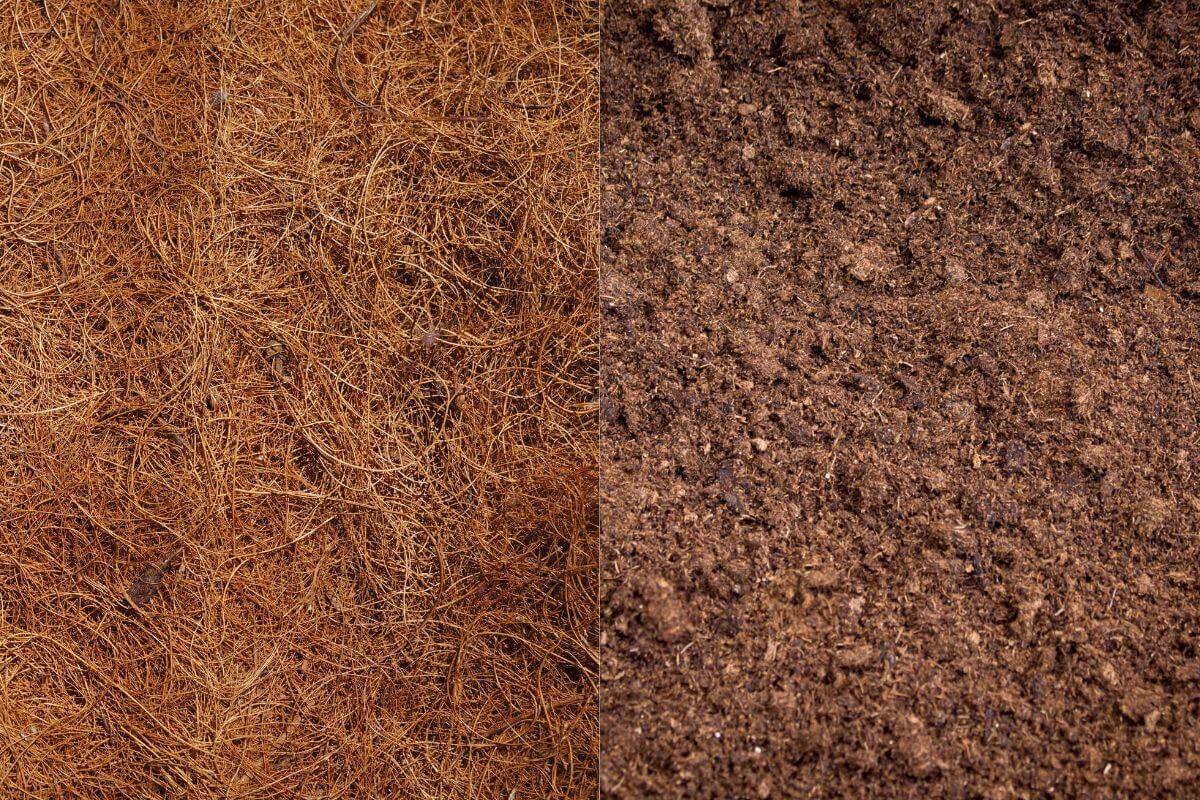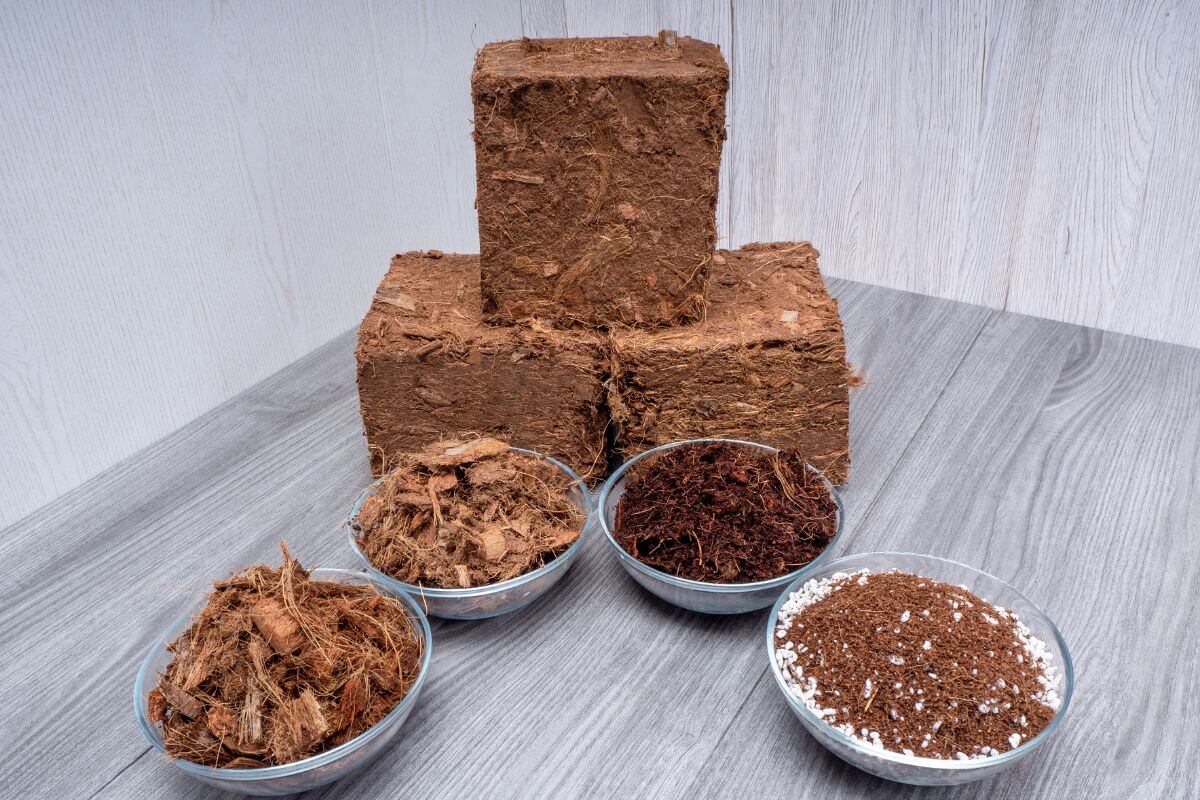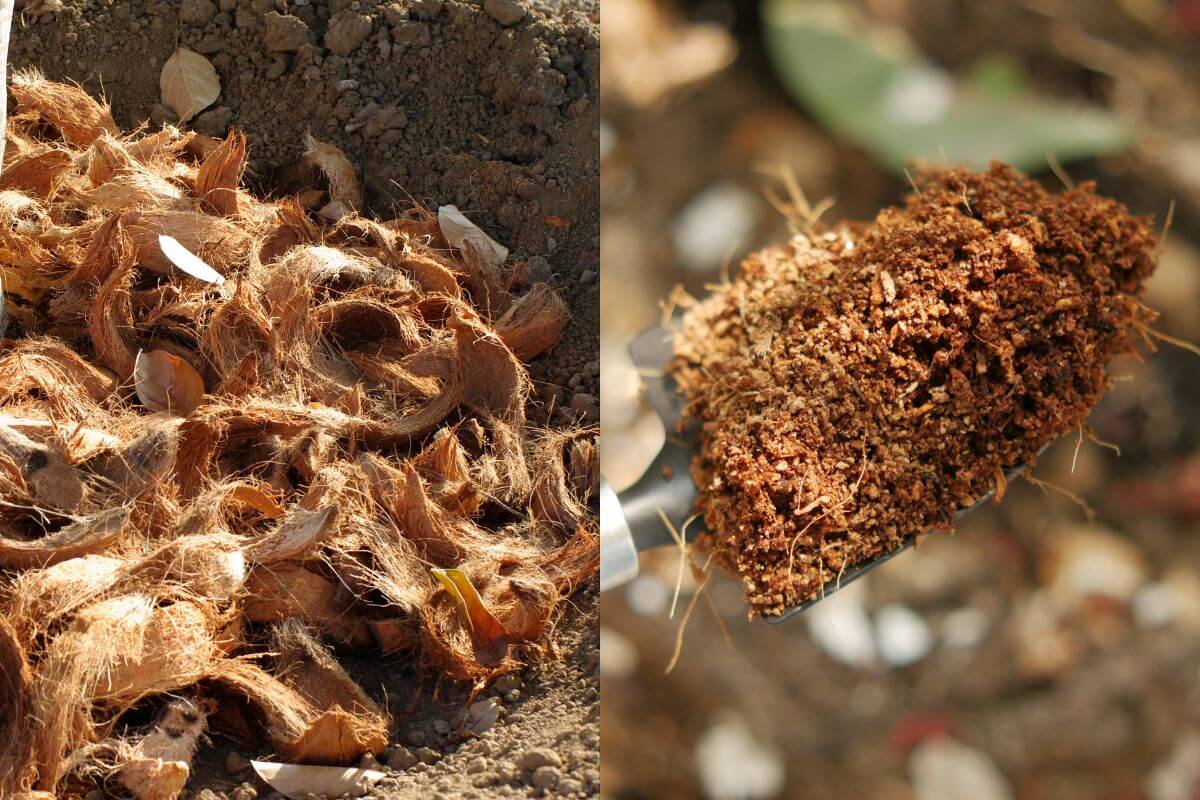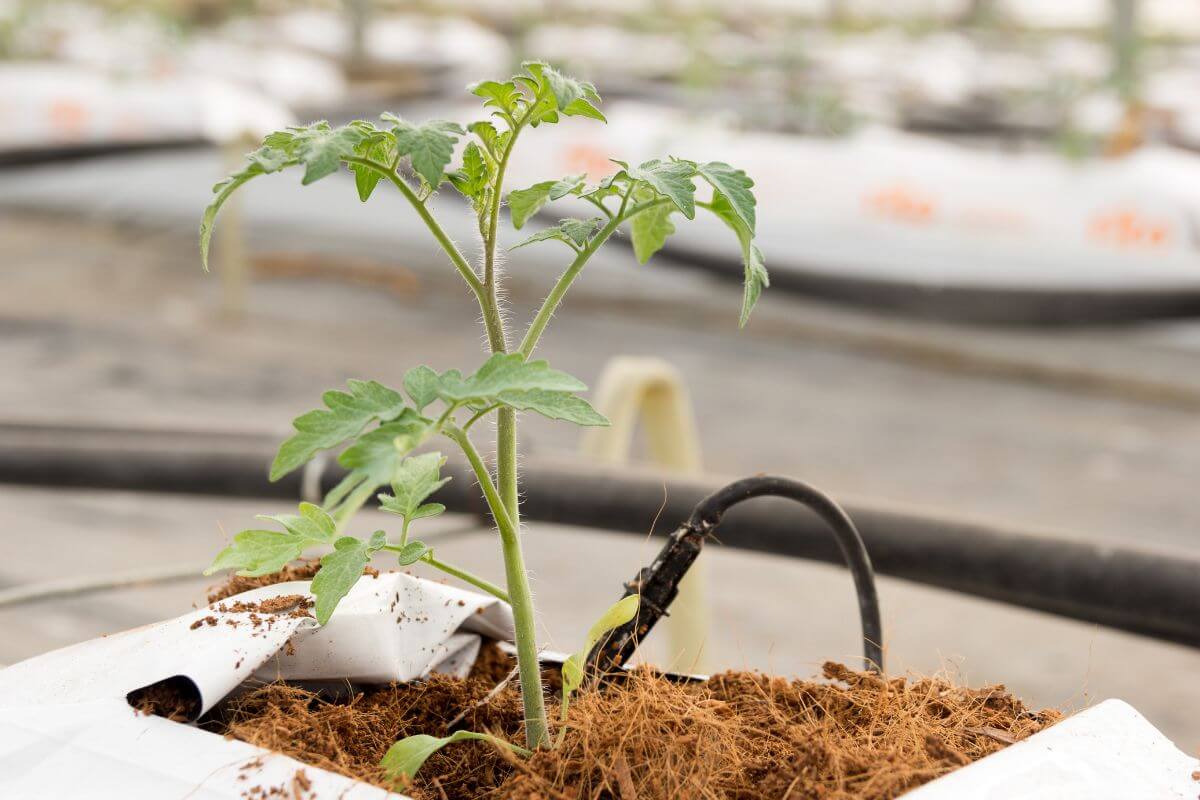When researching growing mediums to start your hydroponics garden, there were probably a wide variety of results and options that appeared.
However, there is no doubt that coco coir and coco peat have popped up somewhere.
How can they not when they are both popular choices for hydroponics and traditional gardenering alike, from the beginner gardeners to the modern gardeners!
It can get confusing though, especially since coco coir and coco peat sound almost the same thing, both can hold a wide variety of plants, and both promises benefits for plant growth.
However, they have their own distinct properties and beneficial nutrients, and you do not want to get confused.
One is not overall better than the other one, it just depends on the needs of your garden plants for healthy plant growth!
- Related article: Hydroponic Growing Medium Options
Are you ready to discover which one is more suitable for your next hydroponic plant? Read along as we explain it for you!
What are Coco Coir and Coco Peat?

Coco Coir
Coco coir, or coconut coir, is an organic, and technically biodegradable, growing medium made out of coconut husks and fibers of coconuts.
Coco coir can be purchased as coconut coir bricks, coir blocks, coir compost, loose material, coir fibers, or coconut chips.
This growing medium is able to hold in nutrients, but in and of itself is inert, or has no nutrients, and is slightly acidic, which is perfect for acid-loving plants and acidic soils.
In addition to a growing medium, coco coir is also what makes up coir products such as coconut fiber mats, brushes, door mats, and mattresses.
Plus a few other coconut coir products and coconut husk products made from fibrous materials. What a gem for the coconut industry!
Learn more – What Does Coco Coir Do for Hydroponic Plants
Coco Peat
On the other hand, coco peat, or coconut coir peat, is a coconut soil amendment also made from coconut husks.
It is created when the coconut pith, or coir dust, is left over once all of the fibers have been removed from the fibrous husks.
Coco peat has amazing moisture and fresh water retention qualities, and can be used as a natural garden soil conditioner due to its ability to absorb nutrients.
Coco peat is a natural growing medium made out of coconut husks that are ground into a powder. Coco peat has many nutrients and a neutral pH.
Many plant growers will choose coco peat over peat moss from peat bogs, or sphagnum moss, because it is less likely to compact.
Read more here – Coco Peat Growing Medium for Hydroponics
Coco Coir and Coco Peat – Similarities

1. Coconut natural by-product – Both coco coir and coco peat are made out of the husks of coconuts from coconut trees.
Both are essentially a by-product of the coconut farming industry and coir production.
You probably guessed this because of the names of the growing mediums!
2. Growing mediums – Coco coir and coco peat are used as growing mediums, or planting medium.
3. Brown color – Coco coir and coco peat are both brown in color that are derived from what they are made out of—coconuts!
4. Environmentally friendly – Coconut husks are waste products that are difficult to break down naturally, which takes up to eight years.
Since coco coir and coco peat are made out of coconut husks, which are renewable resources, they are both completely eco-friendly options and you are helping to keep them out of landfills for years on end!
5. Hydroponics – Both of these growing mediums can be used when growing plants hydroponically or traditionally.
Coco Coir and Coco Peat – Differences

1. pH level – Coco peat is close to neutral pH level but is slightly alkaline with a pH of 5.8 to 6.8.
This pH level will allow for a slow release of nutrients and you won’t need to add anything to your hydroponics unit to neutralize the pH level.
Coco coir on the other hand has a slightly different pH of 5.7 to 6.5, and is also a neutral pH level.
2. Texture – Coco peat has a light and fluffy texture, but coco coir has a coarse and fibrous texture.
3. Cation exchange capacity – Coco peat has a higher cation exchange capacity making it better for plants that need more nutrients.
Coco coir has a lower cation exchange capacity which could lead to nutrient deficiencies if you are not watching closely as it can hold on to some, but not all nutrients.
4. Drainage – Coco coir provides excellent drainage properties and aeration leading to the need for more amounts of water compared to the coco peat.
Coco peat has excellent capacity for water retention and extra moisture accessible to plants, and would need drainage holes to remove excess water.
This could be seen as either an advantage or disadvantage depending on the needs of your plant.
However, coco coir is often found in hydroponic gardening because of its excellent water retention.
5. Byproducts of Coconut Processing – Coco peat and coco coir are both made out of coconut husks from coconut processing.
However, more specifically, coco coir is made from the coconut husk fibers.
The fiber is found between the internal shell and the outer coating of the coconut.
Tips for Using Coco Coir and Coco Peats in Hydroponics

1. Rehydrate the substrate: Both coco coir and coco peat are dry and compact when you buy them, making them dehydrated coirs.
You’ll need to soak them in fresh water until they expans and become moist to use them in hydroponics. Be patient as this can take several hours, or even a day or two!
2. Add nutrients: Since both coco coir and coco peat are virtually nutrient-free, you’ll need to add vital nutrients to your hydroponic system.
To ensure that your plants are getting the correct amount of macronutrients and micronutrients, follow the specific instructions on your nutrient solution.
Additionally, both planting mediums encourage natural microbial populations.
3. Monitor pH levels: Coco coir and coco peat tend to have a slightly high acidity level.
The ideal pH range of most hydroponic plants is between 5.5 and 6.5, so you’ll need to monitor and adjust the pH levels of your hydroponic system accordingly to ensure amazing plant growth.
4. Use a high-quality coconut substrate: You’re absolutely mistaken you think all coco coir and coco peat substrates are the same and created equal.
Your coco coir and coco peat should be free of contaminants, such as salt or toxins, and has been thoroughly washed and buffered to ensure optimal pH levels.
5. Use appropriately sized containers: Using large containers or pots can lead to over-saturation of the substrate as coco coir and coco peat tend to retain quite a bit of moisture.
Use appropriately sized containers to ensure the right balance of moisture and airflow.
6. Consider using a hydroponic system designed for coconut substrates: Coco coir and coco peat are becoming increasingly popular in hydroponics, and there are now systems specifically designed to accommodate these substrates.
Consider investing in one of these systems for optimal results.
7. Practice good hygiene: Using coco coir and coco peat require frequent cleaning and maintenance to keep them free of contaminants and pathogens, just like all hydroponic systems.
Be sure to rinse and sterilize your containers, pumps, and other components regularly to prevent disease and infection.
Coco Peat vs Coco Coir Final Thoughts
There’s no doubt that coco coir and coco peat are both an excellent choice for plants and hydroponic gardening with their own advantages.
They are both lightweight, easy to use, environment-friendly, and provides healthy plant growth.
Additionally, they both can do an excellent job in containing indoor plants, pot plants, or those that stay outdoors.
If you’re looking for a growing medium that retains moist soil well, coco coir is an absolute great choice.
On the other hand, coco peat is certainly for you if you’re looking for a substrate that is more airy and free-draining!
You can definitely optimize the growth and health of your hydroponic garden plants by simply following the tips on using coco coir and coco peat above!
Check out these articles for more interesting facts about growing mediums:

